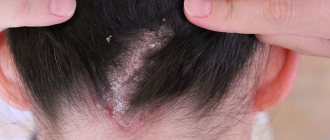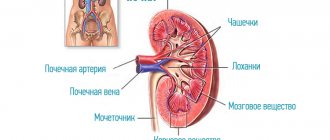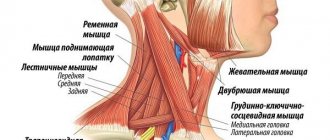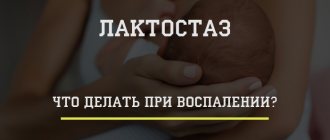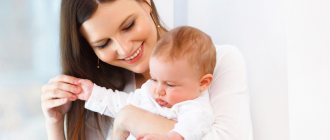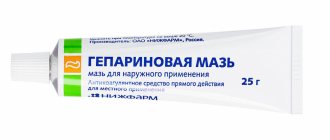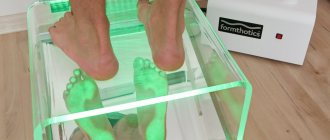- A little about the disease
- Classification of pathology
- Causes and signs of clubfoot in children
- Symptoms of clubbed feet
- What to do if your child gets very clubbed when walking
- Fixation with soft bandages and elastic orthopedic structures
- Treatment according to Ponseti
- Physiotherapy
- Injection of drugs into the calf muscle
- Orthopedic shoes
- Surgery
- How to correct pathology at home
- Gymnastic exercises
- Massage
- Unilateral clubfoot in a child under 5 years of age
When the baby takes his first steps, parents and others notice that he is positioning his legs incorrectly, with the toes facing each other. This pathology is not immediately detected at birth, therefore, at the first suspicion of an illness, it is necessary to make a diagnosis and begin treatment as quickly as possible. The sooner therapeutic actions begin, the sooner the awkward gait will improve. We will give recommendations on how to correct clubfoot in a child aged 1 to 7 years.
A little about the disease
The little patient's legs cannot stand according to the rules, since his feet and joints have become deformed. In this case, the curved position of the legs causes pain while walking or standing in place. Further, motor function is impaired. And ultimately, curvature of the spine and improper functioning of internal organs occur. In addition to health problems, a child’s character can change dramatically, because in adolescence he begins to think about the aesthetic side. Medical professionals warn parents that it is necessary to start treatment as early as possible, that is, immediately after diagnosis.
General information
According to statistics, congenital clubfoot occurs in three out of a thousand children. This defect occurs more often in boys than in girls, but doctors cannot yet explain this gender characteristic. Presumably, clubfoot begins to form in the 1st trimester of pregnancy under the influence of negative factors acting on the fetus. In the international classification, the disease is coded Q66. This group also includes other congenital changes of the foot. Parents often confuse pathological clubfoot with incorrect foot placement in a child who is just starting to walk. Orthopedists at the SM-Doctor clinic will help you carry out a differential diagnosis of the disease based on external objective signs and radiographic data.
Classification of pathology
A clubbed gait in children may occur as a result of birth trauma or improper skeletal maturation during the prenatal period.
Experts also note that clubfoot often occurs at a later time and is called “acquired.”
According to the nature of the manifestation, the pathology is divided into typical and atypical, one or two-sided (when a disease of one or two feet is diagnosed).
In addition, there are four degrees of severity:
- Light, in which the bones are not deformed and the ankle is mobile.
- Medium, where ligaments, joints and muscle tissue are distorted.
- In the severe phase, deformation of both feet occurs.
- A very severe degree threatens the baby with disability, and surgical intervention cannot be avoided.
Causes and signs of clubfoot in children
The disease is very common all over the world and doctors detect it in one child out of 1000 children. Orthopedists, unfortunately, do not immediately detect pathology in infancy. Only after 2 years can you accurately make a diagnosis and find out the cause of the disease.
As a rule, this occurs due to external factors:
- If there were cases of fractures, after which the bones did not heal properly.
- Other injuries associated with bruises, burns, rupture of ligaments and muscle tissue.
- Consequences after life-threatening diseases (poliomyelitis, rickets, hip dysplasia, valgus pathology).
- Scoliosis (curvature of the spinal column).
- Increased lower back muscle tone
- A tumor develops in the legs.
- Parents did not choose the right shoes (too narrow).
Congenital pathology occurs due to:
- genetic failure, when close relatives suffer from the same illness;
- violations of the regime during pregnancy (tobacco smoking, taking illegal drugs, alcohol and working in hazardous work);
- multiple pregnancy;
- tightness of the feet of the unborn child by the umbilical cord or the walls of the uterus;
- severe toxicosis, vitamin deficiency, oligohydramnios or uterine hypertonicity;
- incorrect position of the baby before birth.
Symptoms of clubbed feet
During pregnancy, expectant mothers undergo routine ultrasound examinations several times. At 16 weeks, a qualified doctor can see the first signs of the development of the disease.
After birth, the baby can already be diagnosed by visual examination:
- Severe swelling of the foot, different from normal size.
- One leg may be shorter than the other.
- Fingers point inward (bent).
- High vault.
- The heel and toe are not at the same level.
- The lower leg and joint do not move well.
- Severe deformation of the foot, limbs are moved to the side.
Symptoms of clubfoot in a 1- and 2-year-old child will be as follows:
- When walking, the gait changes greatly: the baby waddles, while raking his legs towards him.
- The knees do not look straight, but are directed towards each other.
- Shoe heels get worn down a lot.
- If your baby walks barefoot on the sand, you may notice an irregular footprint.
- In a relaxed state, the ankle is strongly curved.
- Calluses, corns, and bumps form on the inside of the thumb
- A transverse fold appears on the top.
- The baby often complains of pain when moving long distances.
- Due to the fact that the little one constantly curls his toes, his feet visually appear short.
Our patients
Anastasia
| BEFORE AFTER | Age: 8 months Diagnosis: congenital bilateral severe atypical clubfoot Attending doctor: Vavilov Maxim Alexandrovich |
Miroslav
| BEFORE AFTER | Age: 5 weeks Diagnosis: congenital bilateral severe clubfoot Attending doctor: Vavilov Maxim Alexandrovich |
Alexander
| BEFORE AFTER | Age: 1 year 4 months Diagnosis: congenital right-sided severe clubfoot Attending doctor: Vavilov Maxim Alexandrovich |
Sofia
| BEFORE AFTER | Age: 3 months Diagnosis: bilateral clubfoot Attending doctor: Vavilov Maxim Alexandrovich |
| BEFORE AFTER | Age: 3 months Diagnosis: bilateral clubfoot Attending doctor: Vavilov Maxim Alexandrovich |
Maria
| BEFORE AFTER | Age: 3.5 years Diagnosis: congenital bilateral clubfoot Attending doctor: Vavilov Maxim Alexandrovich |
What to do if your child gets very clubbed when walking
After making a diagnosis, orthopedists immediately begin therapeutic actions to correct the pathology. Treatment depends on the age of the baby, the nature of the disease and the severity. The following methods will help bring your legs into the correct condition.
Fixation with soft bandages and elastic orthopedic structures
For newborns, a complex consisting of massage and exercises is first used. Next, bandage bandages are applied. After the procedures, with a mild degree, this technique brings positive results.
If the pathology is detected at a later age, then a special plaster boot is used. It is used as follows: it is worn for two months intermittently. After seven days of wearing, the boot is removed and the doctor prescribes a massage. Then he is dressed for another week.
Treatment according to Ponseti
Parents often ask the orthopedist what to do if the child is clubbing at the age of 1? At this stage, the most productive method is Ponseti therapy:
- First, the little one is given plaster casts for 2 months.
- Next, surgery is performed to truncate the Achilles tendon.
- Then a removable “Brace” device is applied, which reduces the load on the ligamentous joint.
Physiotherapy
It is necessary in conjunction with other methods to correct the ankle. Since during the procedures, blood circulation in the affected areas of the legs is normalized.
The orthopedist necessarily prescribes: electrophoresis, magnetic therapy and paraffin-based applications.
Injection of drugs into the calf muscle
If clubfoot is detected in a child at birth or at 2-3 years of age, then a Botox injection is given once every six months. It helps to relax the muscle, while the foot takes the correct position.
When diagnosing a pathology due to a nervous disease, doctors prescribe medications containing proserine and strychnine, which improve nerve impulse conduction.
Orthopedic shoes
All of the above methods will give a positive effect if you wear special shoes, shoes, boots and sandals. They must be purchased depending on the season and as the legs grow.
You should buy these shoes (for example, anti-virus children's shoes) according to the recommendations of a doctor, since independent selection will not lead to good results.
When choosing, be guided by the following characteristics:
- The heel should be rigid on both sides and reach the middle of the shin.
- The Velcro system must securely fix the leg.
- The arch support supports the inside of the foot and helps it develop properly.
- Pronator insole.
Specialized stores, such as OrtoPanda, provide a wide range of winter and demi-season shoes of all sizes for boys and girls. You can also purchase insoles, exercise mats and braces.
Go to the orthopedic shoes section
If there are no such retail outlets in your locality, then contact the online store. On the website you will find a photo with a description and price. Consultants will help you make the right choice, tell you which model is best to purchase in your case, delivery conditions and payment method.
Surgery
The surgical method is resorted to if all of the above treatment methods have not given a positive result, and a child at 5-6 years old still has a clubbing when walking.
After surgery, during which an incision is made in the Achilles tendon or it is completely replaced, the ankle deformity is partially or completely eliminated.
Exercise therapy
Exercise therapy sessions are usually alternated with the application of soft bandages to secure the foot in the correct position. Sessions are prescribed for children over 2–3 years old. During classes they conduct the following exercises:
- Rolling the foot from toe to heel.
- Walking with legs apart.
- Walking on a stick that lies on the floor.
- Squats with full foot support.
During exercise therapy sessions, the muscles of the plantar surface and the back muscles of the lower leg become toned. The baby learns to place his leg correctly, which becomes a habit with regular exercises.
How to correct pathology at home
Treatment of a mild form of the disease can be carried out at home, subject to constant monitoring by an orthopedist. The doctor prescribes complex procedures.
Gymnastic exercises
At first, a specialist performs therapeutic manipulations on a newborn in the presence of the mother. Then you can repeat them at home, taking into account some points:
- It is necessary to work with each foot for at least 7 minutes with the frequency of approaches 10 times.
- In this case, it is necessary to carefully correct the baby’s behavior so that during the procedure he does not turn his legs inward.
- The muscles are warmed up with massage movements.
- Bend and straighten your legs at the knees.
We told you how to correct (treat) clubfoot in a child under 2 years old, because curing after 5-6 years is much more difficult.
This will require the following exercises:
- Make circular movements with your feet.
- Walk on heels and squatting.
- Raise your legs 90 degrees.
- Draw with a stick or pencil held between the thumb and second finger.
- Pick up a towel from the floor.
- Stretch the spine using a horizontal bar.
- At an older age, it is very effective to skateboard and ride a horse.
Massage
The procedure should be performed by a specialist who knows the anatomical features of the skeleton, because types of massage involve relaxing the muscles or, conversely, giving them tone.
In this case, the medical worker uses such hand movements (if a newborn or one year old child is clubbing) as: stroking, tapping, light pressure, pinching.
To avoid complications in the future, it is necessary to start treatment as early as possible. After all, parental neglect and inaction can lead to serious illnesses:
- rachiocampsis;
- sleep disturbance
- atrophy of the ankle muscles;
- improper development of the hip and knee joints;
- disruption of the functioning of internal organs due to their displacement;
- retardation in mental and physical development.
Therefore, a comprehensive adjustment is necessary using massage, gymnastic exercises, orthopedic shoes and rigidly securing the leg with a removable “Brace” device.
Unilateral clubfoot in a child under 5 years of age
If problems are identified with one leg, then parents should seriously think about it, because if treated incorrectly, such a pathology develops quickly and spreads to the second foot within one year. Therefore, the orthopedist prescribes a full examination of the hip joints using ultrasound and the brain (if a neurotic disease is suspected).
If the cause of the development of the disease is a problem with a lack of vitamin D, then a diet is prescribed where the diet contains foods high in calcium. Appropriate medications are also prescribed.
It is strictly contraindicated for infants to be in jumpers and walkers. Older children are prescribed massage and exercises. One of the most effective activities is walking with the Charlie Chaplin gait. You can draw a stylized Christmas tree on the asphalt or on the floor in your apartment. Make sure that the baby steps on the branches, while turning the toes of his feet outward.
We provide you with a visual aid by which you can find out what clubfoot is in a 1-2 year old child, why he clubfoots when walking, what to do, and what treatment is prescribed for children.
Children's clubfoot treatment
Almost two and a half thousand years ago, Hippocrates tried to treat clubfoot using manual manipulation and splints. In the 19th century, the use of plaster casts to fix feet was first introduced. There are a large number of different conservative and surgical methods for treating clubfoot, but currently the “gold standard” is the treatment of clubfoot using the Ponseti method. The method was proposed in the 50s of the last century by Dr. Ignacio Ponseti. The specialists of our center have extensive practical experience in treating congenital clubfoot using the Ponseti method.
Our center is located on the basis of the Filatov Children's Hospital, where a school for training medical specialists of the highest level has existed for more than 150 years. Diagnosis and treatment are carried out by the best doctors at the outpatient orthopedics center. If necessary, medical consultations can be organized for our patients with the participation of leading Russian orthopedists who are experts in their field. The earlier treatment for clubfoot is started, the faster and easier the treatment process is. Orthopedic doctors recommend starting treatment for clubfoot immediately after discharge from the hospital. Early initiation of treatment and the enormous experience of orthopedic doctors allows us to achieve maximum correction of a child’s foot in the shortest possible time.
